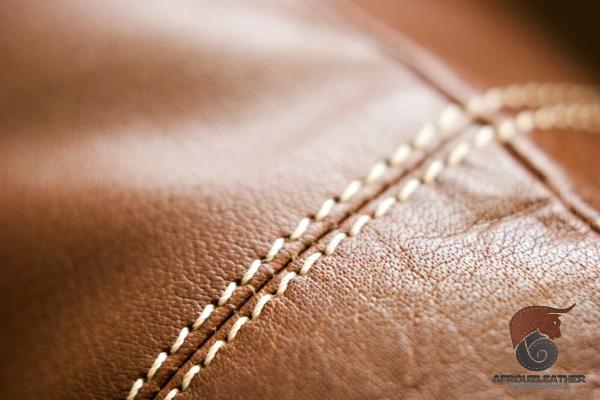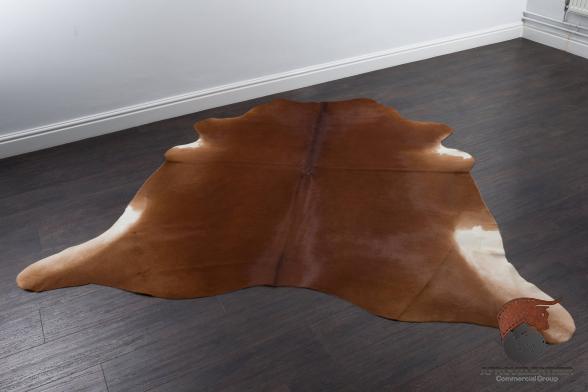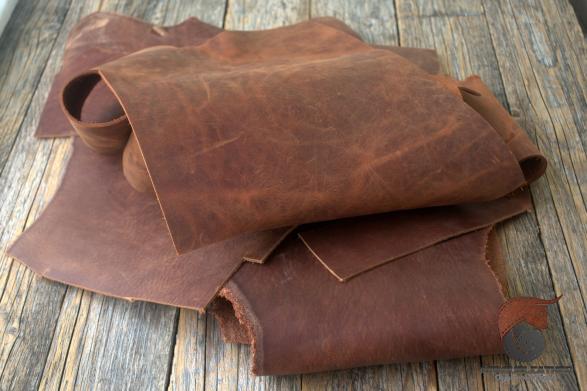Synthetic leather, also known as faux leather or pleather, has gained significant popularity in recent years as a cost-effective and sustainable alternative to genuine leather. With advancements in manufacturing processes, synthetic leather now offers a remarkable resemblance to its natural counterpart in terms of look, feel, and durability. This article aims to provide a comprehensive summary of synthetic leather, its benefits, applications, and the driving forces behind its growing demand. 1. What is Synthetic Leather? Synthetic leather is a man-made material designed to imitate the appearance and texture of genuine leather. It is created using various plastic-based polymers, such as polyurethane (PU) or polyvinyl chloride (PVC), which are combined with textile backing for added strength and flexibility. The resulting fabric is then coated or embossed to mimic the texture of genuine leather. 2. Benefits of Synthetic Leather: 2.1. Cost-Effective: One of the primary advantages of synthetic leather is its affordability compared to genuine leather. This makes it an attractive option for consumers who desire the look and feel of leather without the high price tag. 2.2. Animal-Friendly: Unlike genuine leather, synthetic leather is cruelty-free as it does not involve the use of animal hide. This makes it a popular choice among individuals who are committed to ethical consumption.
leather
 2.3. Durability: Synthetic leather is highly durable and resistant to wear and tear, making it ideal for applications where longevity is crucial, such as furniture, automotive upholstery, and fashion accessories. 2.4. Versatility: Synthetic leather offers a wide range of colors, finishes, and textures, allowing for greater design versatility and customization options. It can be easily manipulated to produce different patterns, prints, and embossing effects. 2.5. Easy Maintenance: Synthetic leather is usually resistant to stains and can be easily cleaned with a damp cloth, making it a practical choice for everyday items that are exposed to spills or dust. 3. Applications of Synthetic Leather: 3.1. Fashion and Apparel: Synthetic leather finds extensive use in the fashion industry, boasting a wide range of applications including clothing, footwear, handbags, and accessories. It offers designers the opportunity to create stylish and trendy products at a more accessible price point. 3.2. Upholstery and Furniture: Synthetic leather is increasingly being used in upholstery and furniture manufacturing due to its durability, versatility, and cost-effectiveness. It can be found in sofas, chairs, automotive seating, and other household items.
2.3. Durability: Synthetic leather is highly durable and resistant to wear and tear, making it ideal for applications where longevity is crucial, such as furniture, automotive upholstery, and fashion accessories. 2.4. Versatility: Synthetic leather offers a wide range of colors, finishes, and textures, allowing for greater design versatility and customization options. It can be easily manipulated to produce different patterns, prints, and embossing effects. 2.5. Easy Maintenance: Synthetic leather is usually resistant to stains and can be easily cleaned with a damp cloth, making it a practical choice for everyday items that are exposed to spills or dust. 3. Applications of Synthetic Leather: 3.1. Fashion and Apparel: Synthetic leather finds extensive use in the fashion industry, boasting a wide range of applications including clothing, footwear, handbags, and accessories. It offers designers the opportunity to create stylish and trendy products at a more accessible price point. 3.2. Upholstery and Furniture: Synthetic leather is increasingly being used in upholstery and furniture manufacturing due to its durability, versatility, and cost-effectiveness. It can be found in sofas, chairs, automotive seating, and other household items.
Specifications of leather
 3.3. Automotive Industry: Synthetic leather has gained popularity in the automotive industry as an alternative to genuine leather for car interiors. It provides a luxurious and comfortable feel, while also being more resistant to fading and stains. 3.4. Sports Equipment: Synthetic leather is utilized in the production of sports equipment such as gloves, balls, and protective gear. Its durability and resistance to moisture make it an excellent choice for these applications. 3.5. Bags and Luggage: Synthetic leather is commonly used in the manufacturing of bags, backpacks, and luggage. Its lightweight nature, durability, and water resistance make it an ideal material for these products. 4. Environmental Sustainability: The rising demand for synthetic leather can be attributed, in part, to increasing awareness and concern for environmental sustainability. Here are a few reasons why synthetic leather is considered a more eco-friendly option: 4.1. Reduced Environmental Impact: Synthetic leather production typically requires fewer resources and generates less waste compared to genuine leather. It does not contribute to deforestation or have the same negative ecological impact associated with livestock farming for leather production. 4.2. Recycling and Upcycling: Synthetic leather can be recycled and repurposed more easily than genuine leather. Additionally, advancements in technology have allowed for the development of eco-friendly synthetic leather made from recycled materials.
3.3. Automotive Industry: Synthetic leather has gained popularity in the automotive industry as an alternative to genuine leather for car interiors. It provides a luxurious and comfortable feel, while also being more resistant to fading and stains. 3.4. Sports Equipment: Synthetic leather is utilized in the production of sports equipment such as gloves, balls, and protective gear. Its durability and resistance to moisture make it an excellent choice for these applications. 3.5. Bags and Luggage: Synthetic leather is commonly used in the manufacturing of bags, backpacks, and luggage. Its lightweight nature, durability, and water resistance make it an ideal material for these products. 4. Environmental Sustainability: The rising demand for synthetic leather can be attributed, in part, to increasing awareness and concern for environmental sustainability. Here are a few reasons why synthetic leather is considered a more eco-friendly option: 4.1. Reduced Environmental Impact: Synthetic leather production typically requires fewer resources and generates less waste compared to genuine leather. It does not contribute to deforestation or have the same negative ecological impact associated with livestock farming for leather production. 4.2. Recycling and Upcycling: Synthetic leather can be recycled and repurposed more easily than genuine leather. Additionally, advancements in technology have allowed for the development of eco-friendly synthetic leather made from recycled materials.
buy leather
 4.3. Conscious Consumption: As consumers become more conscious of their ecological footprint, synthetic leather offers an ethical option for those seeking to reduce their impact on the environment without compromising on design or quality. 5. Challenges and Future Outlook: While synthetic leather offers many advantages, there are still some challenges in terms of perception and acceptance in certain markets. Some consumers may still prefer the natural feel and uniqueness of genuine leather. However, with ongoing advancements in manufacturing techniques and growing awareness of sustainability, it is anticipated that the demand for synthetic leather will continue to rise. The future of synthetic leather also includes ongoing research and development to enhance its performance and sustainability. Efforts are being made to reduce the use of PVC, which can have adverse environmental impacts, and incorporate more eco-friendly materials into the manufacturing process. Moreover, innovations such as incorporating technology for smart functionalities like self-cleaning or self-healing properties are also being explored. Conclusion: Synthetic leather has emerged as a versatile and cost-effective alternative to genuine leather, offering numerous advantages such as affordability, durability, and sustainability. Its applications span across various industries, including fashion, automotive, furniture, and sports equipment. The growing demand for synthetic leather is not only driven by its price competitiveness but also highlights a shift in consumer preferences towards ethical and environmentally conscious choices. As technology advances and sustainability becomes more critical, the future of synthetic leather looks promising, presenting opportunities for continued innovation in this market segment.
4.3. Conscious Consumption: As consumers become more conscious of their ecological footprint, synthetic leather offers an ethical option for those seeking to reduce their impact on the environment without compromising on design or quality. 5. Challenges and Future Outlook: While synthetic leather offers many advantages, there are still some challenges in terms of perception and acceptance in certain markets. Some consumers may still prefer the natural feel and uniqueness of genuine leather. However, with ongoing advancements in manufacturing techniques and growing awareness of sustainability, it is anticipated that the demand for synthetic leather will continue to rise. The future of synthetic leather also includes ongoing research and development to enhance its performance and sustainability. Efforts are being made to reduce the use of PVC, which can have adverse environmental impacts, and incorporate more eco-friendly materials into the manufacturing process. Moreover, innovations such as incorporating technology for smart functionalities like self-cleaning or self-healing properties are also being explored. Conclusion: Synthetic leather has emerged as a versatile and cost-effective alternative to genuine leather, offering numerous advantages such as affordability, durability, and sustainability. Its applications span across various industries, including fashion, automotive, furniture, and sports equipment. The growing demand for synthetic leather is not only driven by its price competitiveness but also highlights a shift in consumer preferences towards ethical and environmentally conscious choices. As technology advances and sustainability becomes more critical, the future of synthetic leather looks promising, presenting opportunities for continued innovation in this market segment.

Your comment submitted.